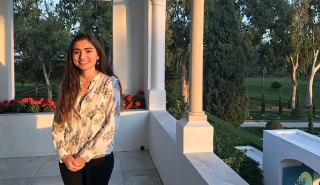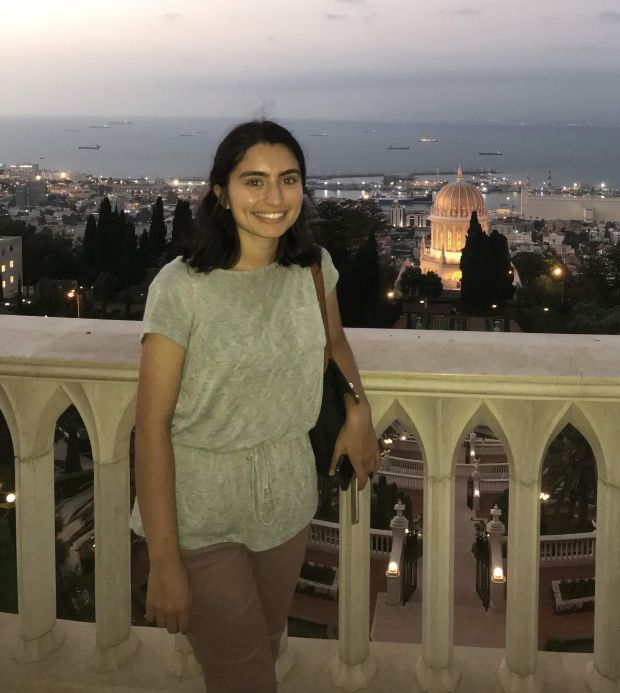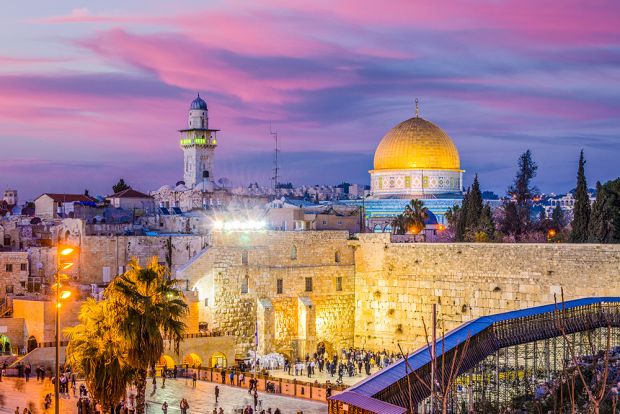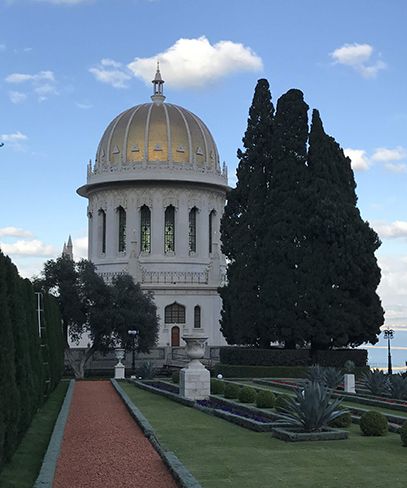How Do You Prepare for Pilgrimage?

For centuries, pilgrimage has been a journey to a sacred place that members of many religions participate in. This journey is both a spiritual and a physical one. At the start, it often includes many hours of travel, either by plane, bus, train, or (what used to be the most common) on foot. The travelers are known as pilgrims.

Sevda visited the Shrine of the Báb and its surrounding terraces and gardens on Mount Carmel in Haifa, Israel, in 2018.
Before you depart, it’s helpful to know about the location you’re traveling to. You can start by asking those you know who have already gone on pilgrimage. Some questions you might ask them are: What was your pilgrimage experience like? Was there anything you took with you that was helpful? What stood out to you most? Do you have any advice?
You can also find books at your local library or visit informational websites that talk about the history of the pilgrimage site you’re visiting. Learning about the location and the types of activities you’ll be doing can help you prepare. Your journey and time on pilgrimage might include long days, lots of walking, meeting new people, and eating unfamiliar foods.
Once you leave for your trip, you can think about any goals you might have during your pilgrimage. Some examples of goals could include: going to bed early so you’re rested, waking up early for prayers, journaling about your thoughts, writing down interesting information you learn each day. Your goals can also be something like wanting to practice having patience, being a good listener, or making new friends.

Jerusalem is a holy city in the Jewish, Christian, and Muslim faiths.
Where you travel to in the world might be different depending on the religion you observe. Both Jews and Christians honor holy sites in Jerusalem and Israel. For Muslims, the Kaaba is the most sacred spot, and it’s located in Mecca, Saudi Arabia. For Buddhists and Hindus, there are holy places across India and Nepal. For Bahá’ís, holy shrines and gardens are located in Haifa and ‘Akká, Israel. These are only some of the places people travel to for pilgrimage.

The Shrine of the Báb in Haifa, Israel, is a sacred destination for Bahá’ís and part of a UNESCO World Heritage Site.
Although these are all different locations, the spirit and purpose of a pilgrim are similar. When you approach these sacred sites, it’s helpful to enter with an open heart and mind. You may notice other pilgrims circling around the holy site in a meditative state. This is called circumambulating, and it’s a common sign of devotion.
There are many different ways to meditate, and you can try different activities as forms of meditation. In addition to repeating a prayer or piece of writing and reflecting on its meaning, you can draw your surroundings or the thoughts that come to your mind. Music can also be a way to meditate. You can create a melody for a meaningful quote that connects to your heart. Some activities might resonate with you more than others, and that’s okay. Try to listen to what speaks to you, and understand that it might change over time.
Remember that it’s okay to not complete your goals every day. There will be a lot of new things to see and learn on pilgrimage, and each day will be unique. Look at each day as a fresh start to try and reach your goals.
‘Abdu’l-Bahá, the Bahá’í leader from 1892–1921, said holy places “are undoubtedly centers of the outpouring of Divine grace … one’s heart is moved with great tenderness.” Being aware of the history and significance of where you are during pilgrimage can help you receive the blessings these special places shower upon you.

Sevda Fakhri has a bachelor’s degree in English from the University of Washington and is currently studying Fashion Design. After long days of sewing and learning new crafts, she loves coming home to her gray kitty named Toosi.
Images: Jerusalem by Sean Pavone, shrine by Sevda Fakhri
Pilgrimage28 Bahá’í Faith511 Oneness of Religion26 Sacred Places2 Travel82 Cultures128